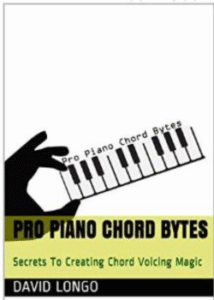 When you hear the lush, unmistakable warmth of Bill Evans’ harmonies or feel the pulse of Oscar Peterson’s command over every chordal nuance, you’re witnessing the power of two-handed jazz piano voicings in full bloom. These are more than just note combinations—they’re brushstrokes in a broader sonic painting, offering pianists endless flexibility and emotional depth.
When you hear the lush, unmistakable warmth of Bill Evans’ harmonies or feel the pulse of Oscar Peterson’s command over every chordal nuance, you’re witnessing the power of two-handed jazz piano voicings in full bloom. These are more than just note combinations—they’re brushstrokes in a broader sonic painting, offering pianists endless flexibility and emotional depth.
In jazz, voicing is everything. It’s how a chord breathes life into the room—how a single moment can feel tender, triumphant, or tantalizingly tense. When a pianist gains fluency in voicing with both hands, the keyboard transforms from an instrument into an entire orchestra.
The Art of Balance and Color
At its core, two handed jazz piano voicings allow you to treat the piano like a self-contained big band. The left hand can hold down roots, guide the groove, or interject with rhythmic stabs. Meanwhile, the right hand crafts color—extensions, alterations, and flourishes that give the chord its flavor.
Consider Bill Evans, the master of introspective harmonic language. His left hand often whispered instead of shouted, freeing the right to explore suspensions, upper extensions, and inner voice movements with almost orchestral clarity. His approach showed that voicing isn’t just technical—it’s emotional storytelling.
Then there’s Oscar Peterson, whose thunderous swing and relentless precision gave voicings a muscular, driving edge. Peterson often doubled chord tones for emphasis, reinforced with rolling arpeggios or cascading lines, all tied together with impeccable time.
Why Two Hands Matter
Using both hands effectively doesn’t mean overcrowding your playing—it means using space with intention. The left hand might play sparse shell voicings (like root and seventh), while the right hand builds the “color stack”: ninths, elevenths, altered tensions. Or perhaps you’re walking bass lines in the left and comping clusters with the right, like Red Garland did on countless Miles Davis recordings.
What separates good players from great ones is how they manipulate these elements in real time. Voicings shift depending on the mood, the ensemble, and the moment. That’s the thrilling part—two-handed jazz piano voicings aren’t static formulas. They’re living, breathing choices you make on the fly.
How to Develop Your Own Voice
Here’s where things get exciting. You don’t need decades of gigs under your belt to start playing more like the pros. The secret is developing voicing vocabulary gradually and methodically. Focus on:
- Voice leading: Smooth transitions between chords using shared tones.
- Economy of motion: Don’t jump all over the keyboard unless it serves the music.
- Shape and tension: Learn when to lean into dissonance and when to resolve.
Listening is key, too. Transcribe a chorus from McCoy Tyner or Herbie Hancock and note how their voicings breathe. You’ll start to see patterns—like Tyner’s quartal voicings or Herbie’s modal freedom—that you can adapt to your own style.
Discover the Secrets Behind Great Voicings
Take your voicing skills to the next level with . This resource is designed to demystify the art of crafting rich, expressive voicings.
It’s especially helpful for cocktail pianists, who need to blend sophistication with subtlety. The ability to evoke mood while keeping things harmonically fresh is a key ingredient in that world, and this guide delivers techniques, shapes, and intuitive strategies that shine in solo or duo contexts.
With step-by-step guidance, shortcuts to reharmonization, and creative examples drawn from the greats, it’s a practical way to inject your playing with pro-level polish and color—whether you’re in a smoky jazz bar or at the corner piano of a seaside resort.
Final Thoughts: Voicing as a Lifelong Exploration
Mastering two-handed jazz piano voicings isn’t about rote memorization—it’s about unlocking creative potential. It’s the difference between playing a chart and playing music. As your voicing vocabulary expands, so too does your ability to communicate moods, ideas, and stories at the keyboard.
So the next time you sit down to play, ask yourself: what emotion am I voicing? Whether it’s a whisper of longing like Bill Evans or a joyous swing like Oscar Peterson, the tools are under your fingertips.
Ready to explore the spectrum? Let your two hands become your voice.